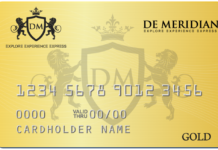Words are just one thread in human connection; sometimes, they’re not even the most important one.
Nonverbal cues, including posture, gestures, facial expressions, and body language, may communicate ideas more effectively than words.
It’s a quiet force with amazing clarity for communicating intentions, feelings, and messages.
In this blog article, we will explore the importance of nonverbal communication in our everyday lives, how Communication Skills might improve it, and the special domain of the British Language Course.
Table of contents
- The Ubiquity of Nonverbal Communication
- The Language of Facial Expressions
- The Power of Gestures
- Posture and Body Movement
- British Sign Language Courses
- Enhancing Communication Skills Through Nonverbal Awareness
- Conclusion
The Ubiquity of Nonverbal Communication
Our body speaks louder than words do when we don’t even talk. Imagine how someone’s shoulders drop when feeling down or their eyes shine when they meet a buddy they adore.
These nonverbal clues cut through linguistic boundaries and are universal.
Up to 93% of human communication is nonverbal, according to research. It’s a strong technique for transmitting feelings and intentions, often more precisely than words.
A pleasant grin, for example, may quickly make someone feel at ease, but a furrowed brow conveys worry or uncertainty.
The Language of Facial Expressions
The most expressive surface for nonverbal communication is probably our faces. Any raised eyebrow, grimace, or grin has much information to convey.
Consider the lifted forehead and widened eyes of amazement or the tense brow and clinched jaw of someone lost in contemplation.
Gaining proficiency in reading and interpreting facial emotions is essential for effective communication.
By enabling us to assess the emotional condition of others, it promotes empathy and improved comprehension in our relationships.
The Power of Gestures
Subtle hand and arm motions, or gestures, are another excellent means of nonverbal communication.
They may serve as a stand-alone form of expression, emphasise our spoken words, or make our intentions clear.
Think about the basic thumbs-up motion.
It is a widely understood expression of agreement and approbation that cuts across linguistic divides. Conversely, crossing one’s arms might be seen as resistance or defensiveness.
Posture and Body Movement
Our body language, including our posture and walking, speaks volumes about our objectives, confidence, and attitude.
Consider the difference between someone who shuffles with their eyes locked on the ground and someone who walks with their shoulders back and head held high.
The latter might appear unsure or reserved, whereas the former radiates confidence.
Being able to interpret body language and posture well is an important communication ability.
We may convey confidence and assertiveness by purposefully changing our posture, which may improve our interpersonal and professional interactions.
British Sign Language Courses: Unlocking a Unique Form of Communication
There are certain types of nonverbal communication, such as sign language, even though most human nonverbal communication is unconscious and universal.
In the UK, the Deaf population uses British Sign Language (BSL), a comprehensive and expressive language.
You may improve your communication abilities in general and access new communication opportunities by enrolling in a British Sign Language course.
Acquiring knowledge of BSL facilitates communication with Deaf people, promoting acceptance and comprehension.
It’s a unique and worthwhile learning ability since it’s a visual and tactile language that uses body language, facial emotions, and hand forms to transmit messages.
Enhancing Communication Skills Through Nonverbal Awareness
Enhancing your general capacity to establish successful connections with others is closely related to improving your nonverbal communication abilities.
The following are some strategies to enhance your communication by using the quiet power of body language:
- Take note of your nonverbal cues. Are you communicating the way you are meant to? When required, consciously adapt by keeping proper posture and making the right motions.
- Take in more of the discussion than simply what is being said while you are speaking. Observe their posture, gestures, and facial expressions to comprehend the speaker’s message more fully.
- Consider yourself from the other person’s point of view when you communicate. Recognising their nonverbal clues will enable you to react correctly and establish a stronger emotional connection.
- Consider enrolling in a general communication skills workshop or a British Sign Language course if you want to improve your nonverbal communication abilities. Opportunities like this might provide insightful advice.
Conclusion
Our relationships, interactions with others, and worldviews are all shaped through nonverbal communication, a quiet but powerful force.
On a deeper level, it enables us to connect across linguistic and cultural barriers.
Understanding the importance of nonverbal signals is a crucial first step towards developing more effective and sympathetic communication skills, regardless of whether you’re studying British Sign Language or just trying to improve.
So, pay attention to the unsaid language surrounding you, and use its quiet power to strengthen your personal and professional connections.









